You are here
Search by issue
Media Releases & News
- SU Media Releases
- 2024
- 2023
- 2022
- 2021
- 2020
- 2019
- 2018
- 2017
- 2016
- 2015
- 2014
- 2022
- 2013
- 2012
- 2011
- 2010
- 2009
- General Statements
- Sovereign Treaties: International Law
- Walkout Statement from Sacred Fire
- Proclamation (with video Readings)
- UDI's Explained
- What is 'Decolonisation'?
- Uluru Statement from the heart
- Sovereign Manifesto of Demands
- NO CONSENT to Recognition
- Submission on ILUA Amendment
- Uluru Statement video testimonials
- Uluru Statement grassroots videos
- Complexity of Treaty and Treaties
- Understanding Treaty & Treaties
- Official SU Meetings
Sovereign Union Menu
- Self Governance
- International
- Treaty - Treaties
- Sovereignty
- General Principles of Sovereignty
- First Nations sovereignty defined
- The Sovereignty Debate
- Sovereignty into Governance
- Reform: Practicing sovereignty
- Sovereignty after Mabo
- What about Sovereignty?
- Current sovereignty debate
- Sovereignty protest Qld
- Research papers & Theses
- Sovereignty never ceded -thesis
- SA sovereignty challenged
- Rosalie Kunoth-Monks leads the way
- Pacific Islanders Act 1875
- Asserting Aboriginal Sovereignty
- Aboriginal rights then & now
- Michael Kirby Oration
- Academic Paper : Songlines
- John Howard recognised sovereignty
- Queen Victoria: Crown owns nothing, Aborigines sovereign
- Rejecting 'recognition'
- Yingiya Mark Guyula Speach
- New Way Summits
- Decolonise
- August
- Australia: UN Questionnaire
- July
- Law against Genocide Bill
- Rally: 'Let us go Home'
- Ray Jackson: 30 years of light
Special Features
- History
- During Invasion
- Invasion
- 1788-2014 Invasion to Resistance
- 'The condition of the natives' 1905
- Mapping QLD massacres
- Cooks Instructions & Diary
- Whites & Blacks during the colonisation in the late 19th Century
- Australia's history of slavery
- Dad 'n Dave - The Qld killing fields
- Treatment of Aboriginal Prisoners
- 'Conspiracy of silence' blood baths
- British Parliament Report 1837
- Culture
- Horrors of North West WA
- Ignorance & Racism
- Invasion
- Post Invasion
- Stolen Remains and Collections
- Culture
- Kitty Wallaby: Dreamtime & colanisation
- Improve heritage management
- Unlock secrets of rock art
- Kurlpurlunu found in Central Australia
- Forgotten' Woolwonga tribe for 130 years
- First Nations rock art is at risk
- Language diversity threatened, study
- Languages Treasure trove
- Pressure to lose values and culture
- Languages reveal scientific clues
- Ignorance & Racism
- Father of the Stolen Generation
- Aboriginal counting myth won't go away
- Pleading letters to 'Protector'
- 1926 plan for an Aboriginal state
- First prisoner abuse inquiry 1905
- Legalised slavery: hidden reality
- The second dispossession
- Rottnest Island internment camp
- Meston's 'Wild Australia' Show 1892-1893
- Stolen Wandjina: Cultural Appropriation
- Whitefellas destroyed our bible
- Fraser Island Death Camp
- Intervention to kill self-determination
- Ongoing Warfare
- Pre Invasion
- Culture
- Genesis
- Out of Australia - Not Africa
- confirmation of genetic antiquity
- WA's Mid West History 30K
- 'Australian' peoples were first Americans
- How First Nations saw the Stars
- Ice Age struck First Nations people hard
- Kimberley paintings could be oldest
- Misunderstand First Nations science
- Sea-Level recorded
- James Cook's Secret Instructions - 30 June 1768
- Trading & Hospitality
- Landcare, Science, Agriculture
- Captain Cook
- During Invasion
- The Frontier Wars
- Memorial Marches
- The Frontier Wars
- Anzac Gathering 2012
- Aboriginal servicemen honoured
- 1905 Report WA's North
- Anzac Day Videos
- Battle for FF memorial
- From invasion to resistance
- Frontier Wars Remembered 2016
- Image Galleries
- Invasion & Sovereignty
- Invasion Day Callout for 26 January
- Memorial ignores frontier war
- The Freedom Fighters
- Truth about the Gulf country
- Conflicts/Massacres
- Massacres & Trophies
- Mixed Media
- Canberra 2016
- Closing the Homelands
- Homelands explained
- Central Articles
- Closing Homelands for mining
- Vital for ecosystems
- Terra nullius never went away
- Barnett's plan to axe homelands for years
- Fed Gov't $100 million deal with states
- Mining: $10,000 job sweeteners
- Abbott rejects international law
- Barnett's War on Health
- Anatomy of Racism in 2015
- Food supply autonomy needed
- Freedom Summit: WFD Media Release
- Funding: Confusing-fractured-racist
- It's OK to discriminate
- The demise of Coonana community
- Sovereign Union Articles
- Reports by State & Territory
- Video - Images - Audio
- Rallies
- Media Reports
- Homeland Closures
- 'Recognition' Constitution
- Nuclear Waste Dumps
Key Topics & Issues
- NT Detention Hearings
- NT Intervention
- Sovereign Embassies
- All Embassies - Map
- Embassies
- Canberra Tent Embassy
- Perth Sovereign Embassies
- Portland Sovereign Embassy
- Brisbane Sovereign Embassy
- Brisbane Embassy - Home
- What is Brisbane Embassy?
- 2013 content
- 2012 content
- New Stolen Generation rally
- Police arrest sovereigns
- Politically motivated eviction
- Brisbane - Eviction notice
- Brisbane Embassy meets CMC
- Brisbane conference 2012
- Charges dropped but ...
- Council meets Elders
- Embassy arrestees protest
- Embassy midnight raid
- Embassy to be shut down
- Fire destroys Embassy
- Musgrave heritage listing
- Sovereigns charges dropped
- Moree Sovereign Embassy
- Broome Tent Embassty
- Woomera Sovereign Embassy
- Airds Sovereign Embassy
- Gugada Sovereign Embassy
- Tent Embassy in Airds, Campbelltown
- Call for Embassy tolerance
- Embassy Articles & Media
- Land, Sea & Water
- Northern Murray Darling Basin
- Water Treaty Talks: Murray-Darling Basin Nations
- Mining Country
- Adnyamathanha people of the rocks
- Ancient approach to global emissions
- Danger: Developing the North
- First Nations Land Management
- Historical sites in NSW
- Clark and Mansell: trading beef
- David Suzuki: Aboriginals best bet
- Dingoes may save wildlife
- Fires support mammals - research
- First Nations had villages and farmed
- Homelands vital for fragile ecosystems
- Hunter gatherers Myth - Bruce Pascoe
- Kangaroos win after hunt with fire
- Race to protect ancient rock art
- Kakadu Park 40th Anniversary
- Land rights and the government
- Native 'wild' rice in Australia
- Native Title amendments slammed
- Ngoongar Grower group using Native Youlks
- WA Aboriginal Heritage Act overview
- Sovereign Neighbours
- West Papua - Freedom Flotilla
- Articles - Free West Papua Movement
- December
- October 2013
- September 2013
- Emergency Protest of Illegal Deportation
- FF activists a test for Abbott government
- West Papuans Deported to Port Moresby
- Six West Papuan's flee after ceremony
- Freedom Flotilla claims success
- Sacred water and fire celebrated
- Ceremony completed in secret
- Military buildup in destination port
- Men released: Treason charges pending
- Julie Bishop incites military action
- Threats to turn back boat
- Four arrested at FF Welcoming
- Time for human rights in Papua
- August 2013
- Media Files
- Articles - Free West Papua Movement
- Atooi Unification Ceremony
- Atooi now has jurisdiction
- Australia & Fiji union
- Canada Day: Time of Mourning
- Canada First Nations alliance
- Canada: Commercial fishing rights
- India: Ruling against mining co
- Indigenous rights struggle
- North American Indians seek Sovereignty
- Statue honors US freedom fighters
- The Creation of one world gov't
- Vanuatu: Pacific custom land tenure
- Arizona tribal law system
- Canada: Tsilhqot'in peoples win ruling
- Embassy meets Indonesians
- Grandmothers: worst ever stealing
- Ibans acquired native customary rights
- Maori did not cede sovereignty
- UN: Canadian Aboriginals in crisis
- West Papua - Freedom Flotilla
- The Invasion
- A day of sadness
- Health and Social Issues
- Suicides & Depression
- Suicides just happened?
- Nothing will be done about the suicides
- First Nations suicide rates
- Gov't not listening - People die
- 77 suicides in SA alone
- 996 deaths by suicide
- Hundreds will suicide if we wait
- Suicides: 'A humanitarian crisis'
- Suicide is humanitarian crisis
- Suicide epidemic worldwide
- Noongar x3 suicide rate
- Falsely arrested & drugged
- Cashless Welfare Card
- Family breakdowns causing repeats
- General Health Issues
- Government Policies
- Youth suicide at crisis point
- Negatively framing policies
- A little boy who hid under the bed
- Defend and Extend Medicare
- Call for help results in children stolen?
- Doctors in communities in WA reduced
- Children and human rights
- Our children more likely to be removed
- Justice? wake up WA
- Need for Bilingual schools
- Racism Effects
- Rosie Fulton
- Work-for-the-Dole Unhealthy
- Youth lost in prisons: Amnesty
- Suicides & Depression
- Gross Abuse
- Genocide and apartheid
- National
- States & Territories
- Suicides
- Imprisonment & Deaths
- International Critisism
- Genocide
- More Gov't Abuses
- Mining and Destruction
- Racism
- Racism Game in Australia
- 27% say it's OK to be racist
- Abbott backs out of Racism changed
- Genocide by Apartheid Australia
- How Bolt should be punished
- Racial discrimination in Australia
- Racism Media
- Racism driver for ill health
- Racism is a health issue
- Racism worse than Sth Africa
- Reform: Just Ask Black Australia
- Unpacking White Privilege
- Welcome to Dja Dja Wurrung Country
- White Australian National Anthem
- Solidarity
Media & Resources
Activism and Politics
- Activism
- Homelands
- For the record: Sovereignty Never Ceded
- Freedom Fighters memorial call
- Anthony Fernando 1864–1949
- Fernando's Ghost - Transcript
- Historic Videos and Images
- Australia’s dirty secret
- Deebing Creek development
- Pilbara pastoral strike
- Pro-Black Isn't Anti-White
- Truth Telling Uluru Statement
- UN slams anti-protest laws
- Whitlam: Legacy of Wave Hill
- Winyirin Bin Bin, Pilbara Strike
- Politics
First Nation Habitats and Villages before and after slaughter & displacement
-
View the full image
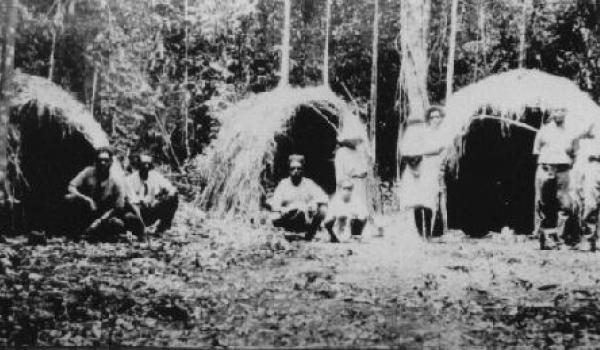
Malanda camp 1930's
-
View the full image
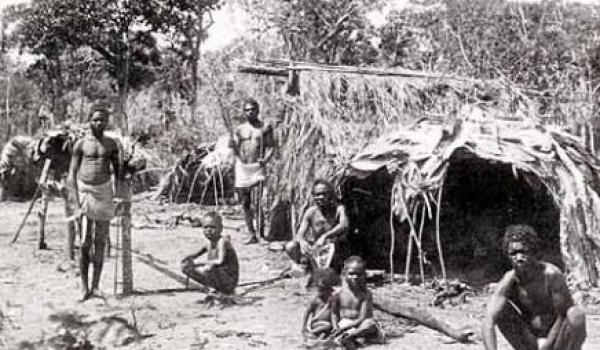
Unknown 1894 (Aboriginal Technology: Housing, Alex Barlow, Macmillan Education Australia 1994)
-
View the full image

A.A. White, Village is in a woodland not far from a mountainous rainforest area at Bellenden Ker in Yidinjdji country c 1904 (Lands and Peoples, The Grolier Society 1951)
-
View the full image
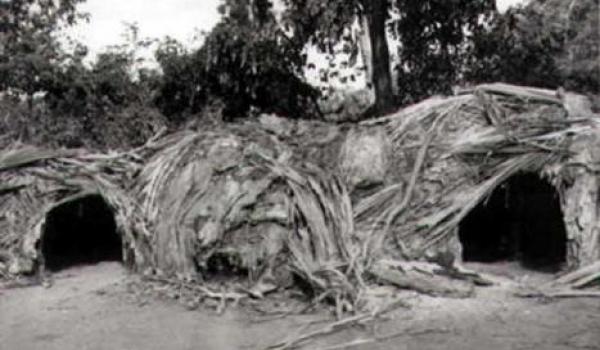
Indigenous Shelter (University of Queensland)
-
View the full image

water colour sketch of Aboriginal housing in Moreton Bay, probably on Stradbroke Island near Amity Point circa 1848 by Owen Stanley on HMS Rattlesnake
-
View the full image
Tyrendarra - replica stone hut
-
View the full image

Remains of an Aboriginal stone house in the Budj Bim Cultural landscape state's number one priority- World heritage listing
-
View the full image
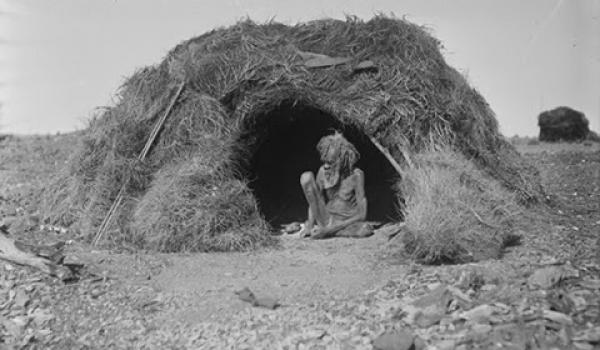
Hut decked with porcupine grass, Eastern Arrernte people, Arltunga district, Northern Territory, August 1920. Photo: Herbert Basedow. Reproduced from glass plate negative (National Museum of Australia)
-
View the full image
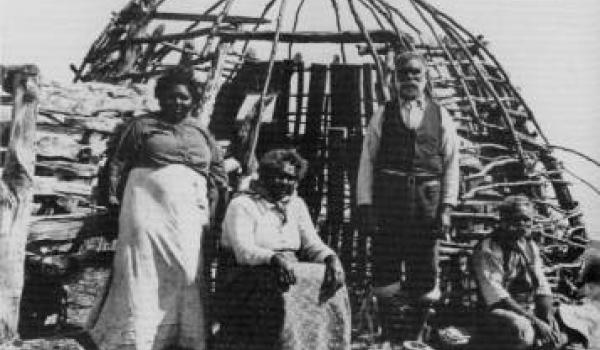
Aboriginal House Frame without spinifex cladding
-
View the full image
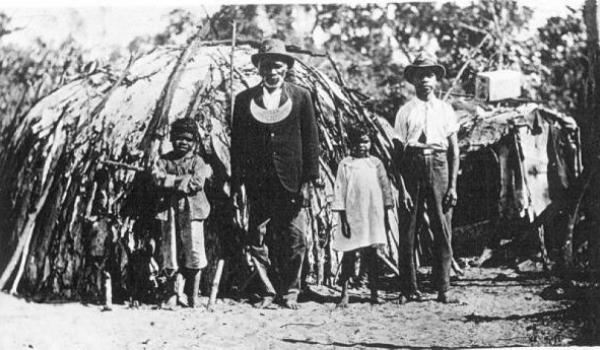
King Billy Jago (Cairns Historical Society)
-
View the full image
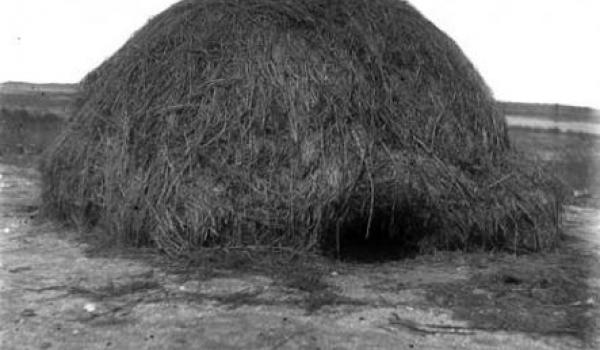
A grass-clad dome from the coastal plains of the southern Gulf of Carpentaria, designed for both wet-season use (Dec to Mar) and mosquito protection. The purpose of the small entrance is ease of sealing, once the occupants are inside. The photo was taken near Normanton in the period 1893-1910. (Photograph: Roth.)
-
View the full image
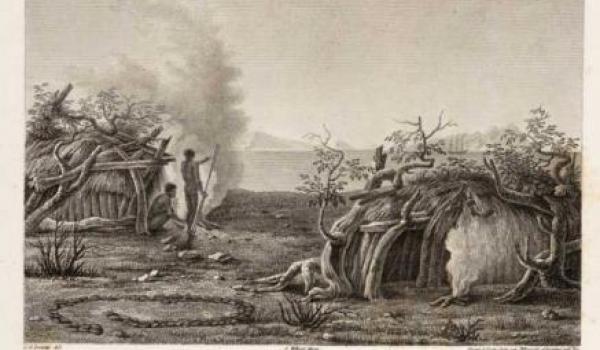
Peron Francois 1807 - See description in text below gallery
-
View the full image
![[1 of 2] Image from 'Narrative of an expedition into Central Australia' by Charles Sturt, performed under the authority of Her Majesty’s government, during the years 1844, 5, and 6. (University of Adelaide) [1 of 2] Image from 'Narrative of an expedition into Central Australia' by Charles Sturt, performed under the authority of Her Majesty’s government, during the years 1844, 5, and 6. (University of Adelaide)](http://nationalunitygovernment.org/sites/default/files/styles/galleryformatter_slide/public/native-villiage-sturt%5B1%5D.jpg?itok=5iN7qjW0)
[1 of 2] Image from 'Narrative of an expedition into Central Australia' by Charles Sturt, performed under the authority of Her Majesty’s government, during the years 1844, 5, and 6. (University of Adelaide)
-
View the full image
![[2 of 2] D [2 of 2] D](http://nationalunitygovernment.org/sites/default/files/styles/galleryformatter_slide/public/shelter3%5B1%5D.jpg?itok=zPQpCwHk)
[2 of 2] D
-
View the full image
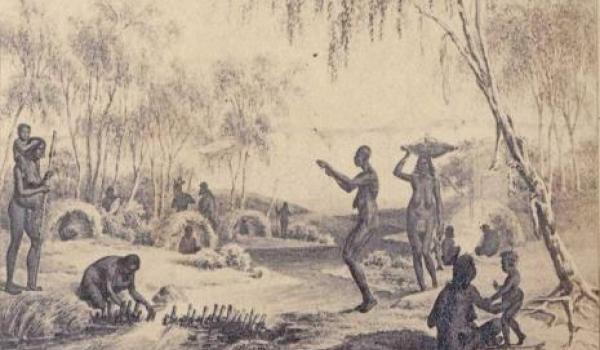
Sketch by explorer Wilhelm von Blandowski c 1849–1859 - Victoria or NSW
-
View the full image
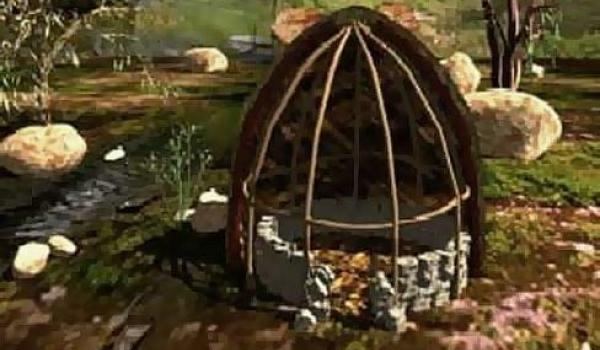
A cross-section of a Gunditjmara dwelling made with rocks, peat sods and reeds (ABC TV)
-
View the full image
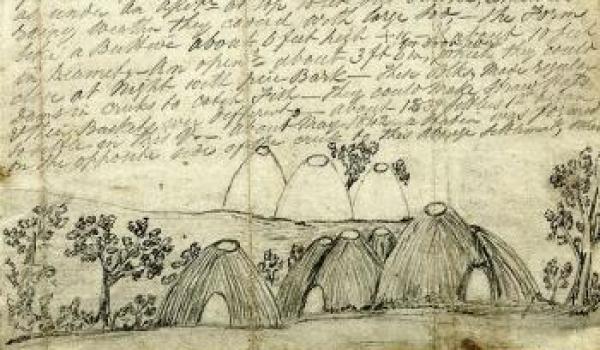
The papers of Brough Smythe 'Blacks, about 50 miles N.E. of Port Fairy, by what is termed the Scrubby Creek'. (State Library of Victoria)
-
View the full image

Unknown source/location
-
View the full image
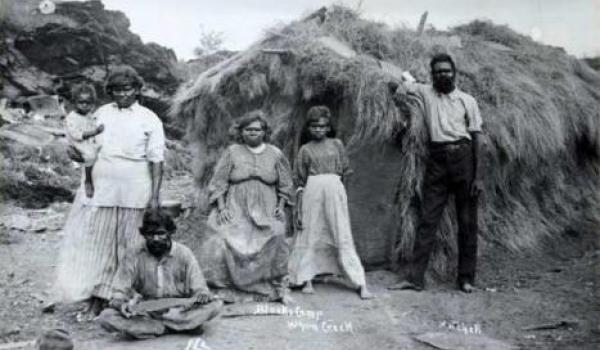
Aboriginal camp Whim's creek (1929?)
-
View the full image
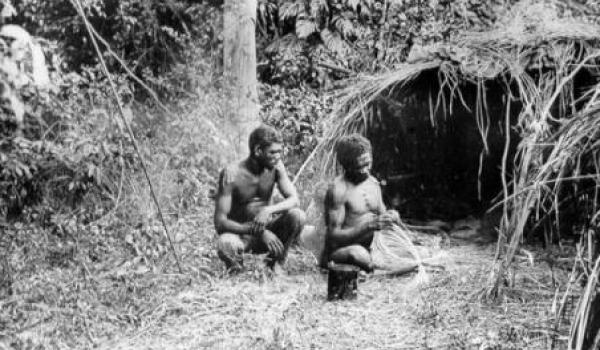
Rainforest near Ingham, North Qld in 1905
-
View the full image
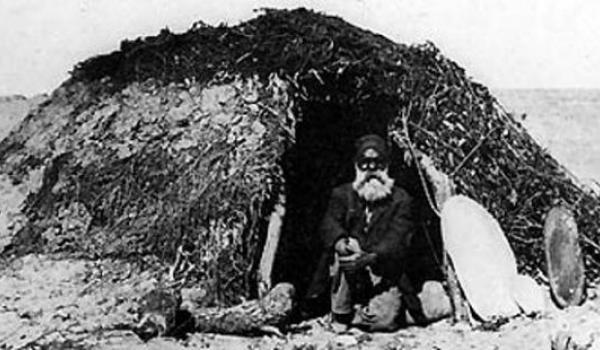
A picture in Dr Memmot's book shows an Aboriginal man sitting in the doorway of a dome-shaped building
-
View the full image
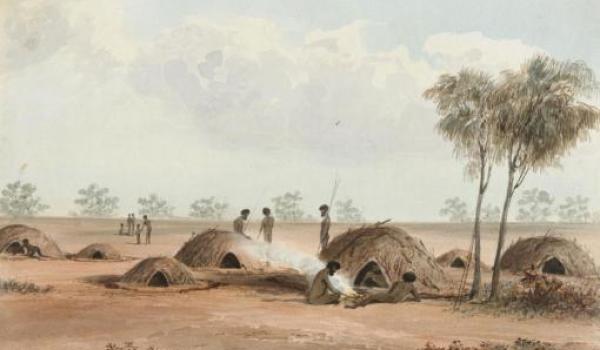
Native village detail of Village near Mt Shannon Watercolour sketch by J. H. Le Keux in Sturt 1849
-
View the full image
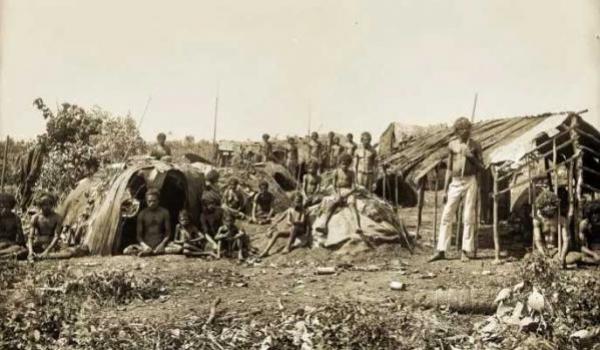
Northern Territory - Paul Foelsche c1890's
-
View the full image
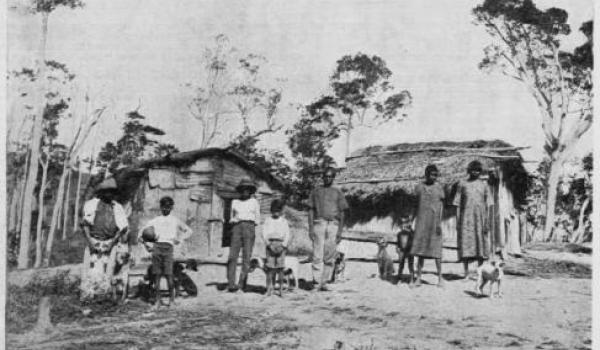
Native village, Daintree River, Queensland
-
View the full image
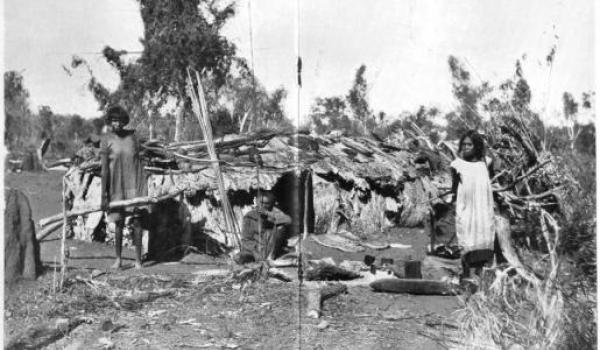
Aboriginal Camp on the Roper River, Northern Territory 'Paperbark Mia Mia'
-
View the full image
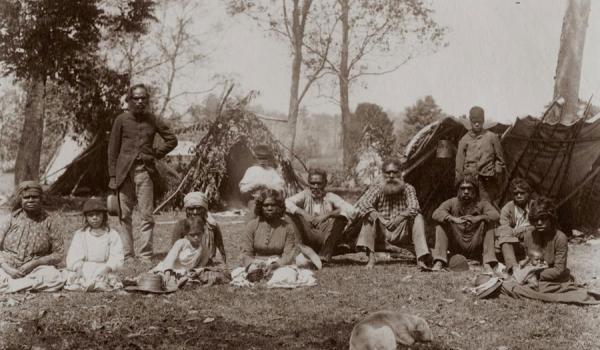
First Nations people on the Tweed River, New South Wales, Australia, circa 1880 Getty
-
View the full image
![Photograph by R. Edwards in Isaacs [1980:107] Photograph by R. Edwards in Isaacs [1980:107]](http://nationalunitygovernment.org/sites/default/files/styles/galleryformatter_slide/public/shelter2%5B1%5D.jpg?itok=1m0gAlUa)
Photograph by R. Edwards in Isaacs [1980:107]
-
View the full image
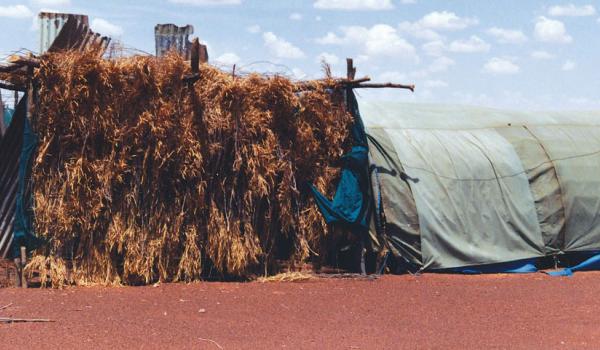
Outstation residence, Little Sandy Desert Photograph by P. Memmott, 1991
-
View the full image
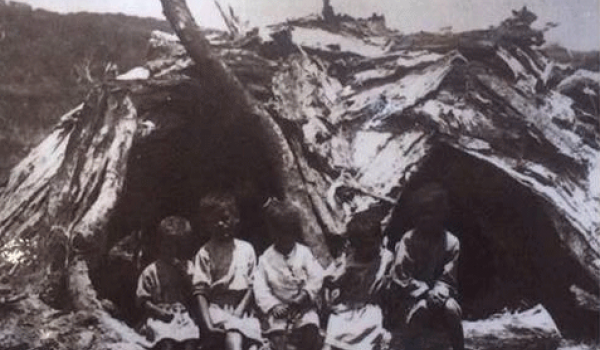
'Durra' -Woppaburra, Keppel Islands Queensland
-
View the full image
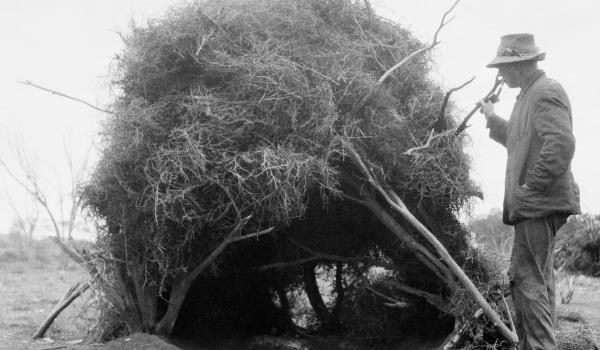
Warburton Shelter (no other info available)
Pre colonial stone housing of the Gundidjmara people in Victoria. The first white settlers describe many such villages right across Australia! Some places consisting of 3000 or more people living sedentary lifestyles. Destroyed to keep the myth of empty land alive.
-
View the full image
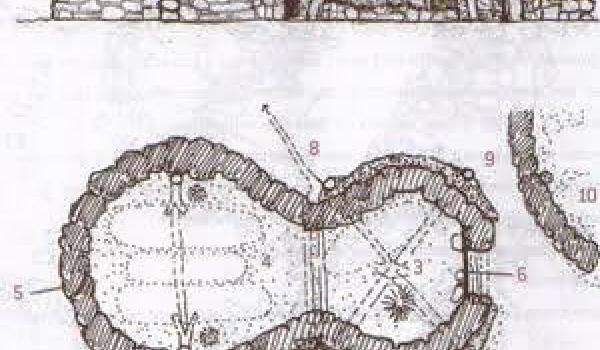
Pre colonial stone housing of the Gundidjmara people in Victoria. The first white settlers describe many such villages right across Australia! Some places consisting of 3000 or more people living sedentary lifestyles. Destroyed to keep the myth of empty land alive.
-
View the full image
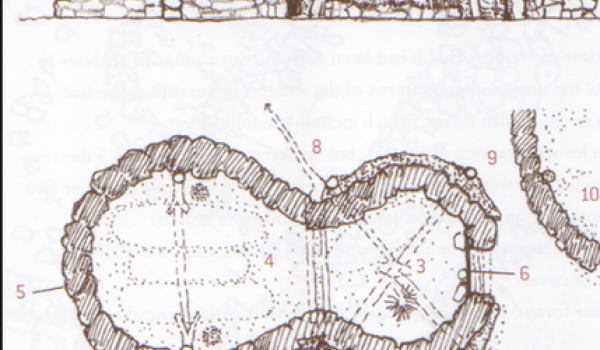
Aboriginal Stone Houses – Re-construction Project, 2013
-
View the full image
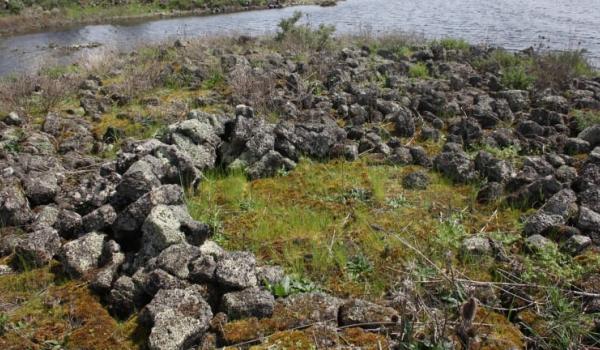
Remains of an ancient Indigenous stone house at Lake Condah, part of the Budj Bim
-
View the full image
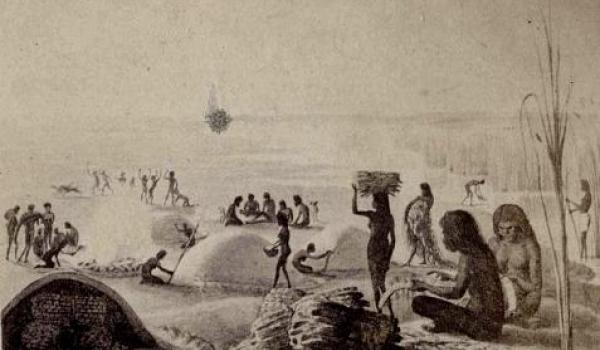
These earth/clay kilns are not houses, but we imagine they could build houses in the same manner if they had reason to. Sketch by explorer Wilhelm von Blandowski c 1849–1859 - Murray Darling region.
-
View the full image
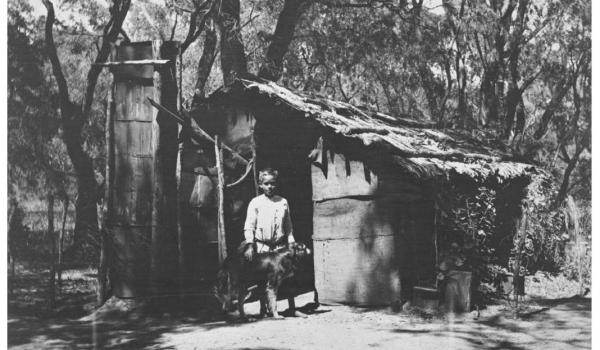
Bush home in Busselton WA c.1930's
-
View the full image
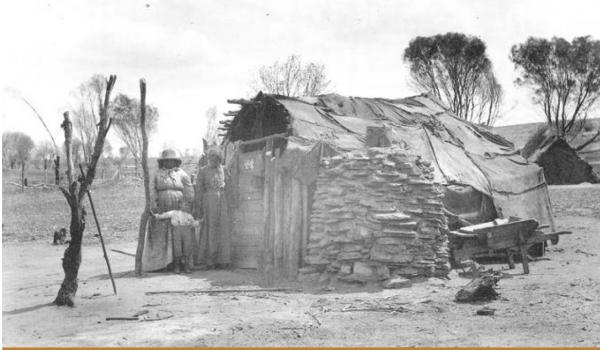
1908 Derdibin. 'Native camp' on on Derdebin Rock, near Northam WA
-
View the full image
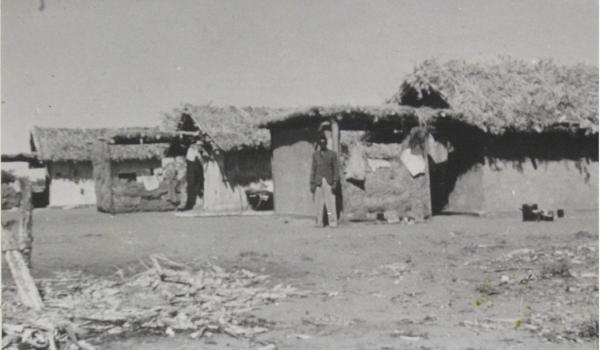
Adobe cottages at Yandeyarra, 1953, Photo by Bill Rourke, State Library of Western Australia, Collection of photographs used by W.H. Rourke in his book My Way
-
View the full image
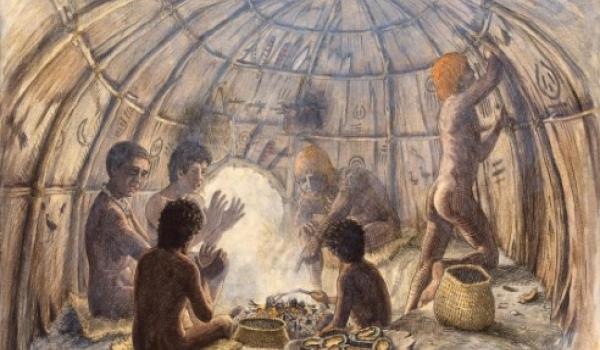
Aboriginal dome hut interior
-
View the full image
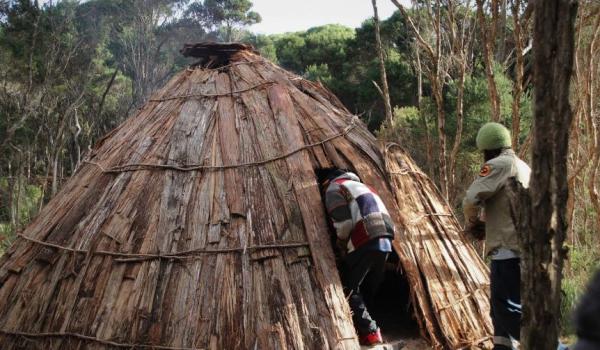
Brenton Brown, Tim Lowery and Graeme Gardner have built this house in Tasmania aiming to get their building techniques as similar as possible to the old ways.(ABC News: Manika Champ)
Recent researchers, including Bruce Pascoe, have described how many First Nations nations/tribes lived in villages or towns, while many others lived in villages seasonally
Once the peoples were displaced from 'country' by European colonists, many were forced into exclusively hunting and gathering, therefore building shelter that served the purpose of this transient lifestyle.
The Beginning of the Invasion (NSW)
After the disaster of white ants eating the wooden buildings put together with convict labour in the early years of the invasion, Arthur Phillip obtained building materials by destroying the region's 200 Aboriginal shell monuments (middens) to use as mortar in stone dwellings. The large shell monuments were up to 12 metres high which had been constructed along the water’s edge out of shells collected over thousands of years by the First Nations peoples.
The colonisers used on-site Beehive lime kilns to process bricks out of the monuments and surrounding middens in order to construct a second town to replace the Aboriginal town, which is now known as the city of Sydney. - Reference
The Vlamingh Expedition (WA)
An historical reference to Aboriginal habitations of a more substantial nature were observations made by a land party from the Vlamingh Expedition, who reportedly saw five huts close together at Wittecarra Creek, close to the mouth of the Murchison River in Western Australia. One of these huts was described as being "made of clay with a roof sloping down on two sides.
In 1803 another report of Aboriginal people living in a larger permanent settlement derived from the Baudin expedition, where they encountered a settlement on the tip of Peron Peninsula, Shark Bay, Western Australia on 18 March 1803.
Three members of the Expedition mention this assemblage of huts, Baudin, Peron and Freycinet, and the ship's artist Petit was ordered to make a drawing. According to Baudin, "Twelve or fifteen huts, much better made, than those we have found hitherto, composed the village where this small tribe lived ... ones that belong to the heads of families ... were much bigger and were built with considerably more symmetry."
Peron's description was, "these huts of the Land of Eendracht [central west coast of WA] ... are in the form of a hemisphere slightly depressed at the top ...... Their height is from 12 to 16 decimetres [1.2 – 1.6 m], by a diameter of 20 to 25 decimetres [2.0 – 2.5 m]. They are composed of small trees implanted in the soil ... On the outside are attached layers of foliage and clumps of grass covered by a large quantity of soil." - Reference
The drawing made by the junior artist Petit, first appeared in 1807 in Peron, Lesueur and Petit's Atlas (cropped image below and the expanded image is represented in the gallery above).
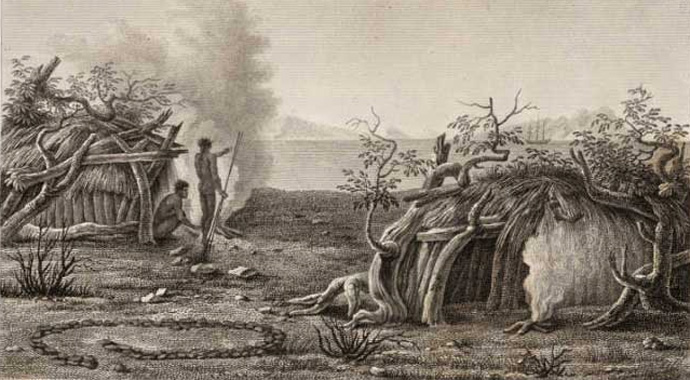
The drawing made by the junior artist Petit, first appeared in 1807 in Peron, Lesueur and Petit's Atlas

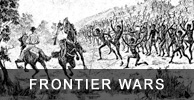


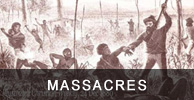
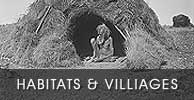












![[1 of 2] Image from 'Narrative of an expedition into Central Australia' by Charles Sturt, performed under the authority of Her Majesty’s government, during the years 1844, 5, and 6. (University of Adelaide) [1 of 2] Image from 'Narrative of an expedition into Central Australia' by Charles Sturt, performed under the authority of Her Majesty’s government, during the years 1844, 5, and 6. (University of Adelaide)](http://nationalunitygovernment.org/sites/default/files/styles/galleryformatter_thumb/public/native-villiage-sturt%5B1%5D.jpg?itok=-P6xnJyR)
![[2 of 2] D [2 of 2] D](http://nationalunitygovernment.org/sites/default/files/styles/galleryformatter_thumb/public/shelter3%5B1%5D.jpg?itok=bpsb4S5M)












![Photograph by R. Edwards in Isaacs [1980:107] Photograph by R. Edwards in Isaacs [1980:107]](http://nationalunitygovernment.org/sites/default/files/styles/galleryformatter_thumb/public/shelter2%5B1%5D.jpg?itok=L9jDyIEI)











